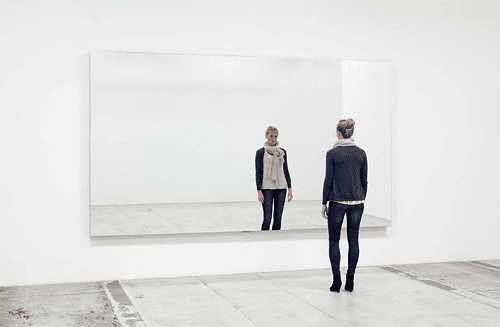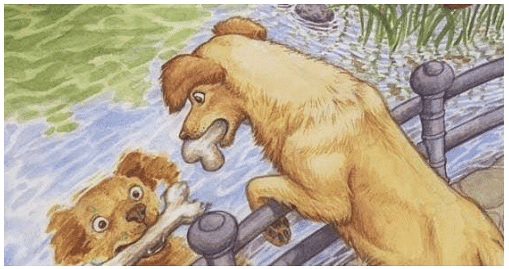Mirror Images And Water Images | Science Olympiad Class 6 PDF Download
Introduction
During our childhood, many of us cherished the playful moments of dressing up while gazing at our reflections in the mirror. Additionally, trips to our grandparents' homes often involved playful outings with friends near bodies of water. As we stood by the water's edge, we would peer into its depths, imagining another figure gazing back at us from beneath the surface.
What is a Mirror Image?
The reflection we perceive in a flat mirror replicates an object in a nearly identical manner, albeit in a reversed orientation that aligns perpendicularly with the mirror's surface. Example: In the given image, upon careful observation of the woman, it becomes evident that her left hand will appear as her right hand in the reflection, and correspondingly, her right hand will appear as the left hand in the mirror's reflection. This can be experienced firsthand by standing in front of a mirror and observing the reflected image.
Example: In the given image, upon careful observation of the woman, it becomes evident that her left hand will appear as her right hand in the reflection, and correspondingly, her right hand will appear as the left hand in the mirror's reflection. This can be experienced firsthand by standing in front of a mirror and observing the reflected image.
What is Water Image?
An object's reflection in water is termed its water image, usually appearing as an inverted version of the object, flipped vertically (upside down). If a mirror were placed horizontally at the bottom of the object, the water image would resemble the mirror image of the object.

Based on the given figure, it's evident that the water image is an inversion of the real image, maintaining the positions of the left-hand side (LHS) and right-hand side (RHS) as in the original figure. However, the top and bottom of the figure undergo a reversal, where the top becomes the bottom and the bottom becomes the top in the water image.
|
70 videos|150 docs|104 tests
|
FAQs on Mirror Images And Water Images - Science Olympiad Class 6
| 1. What is the difference between a mirror image and a water image? |  |
| 2. How can I identify a mirror image in a diagram? |  |
| 3. What are some common examples of mirror images in everyday life? |  |
| 4. How do I draw a water image of a given object? |  |
| 5. Can all objects produce a clear mirror image? |  |
















